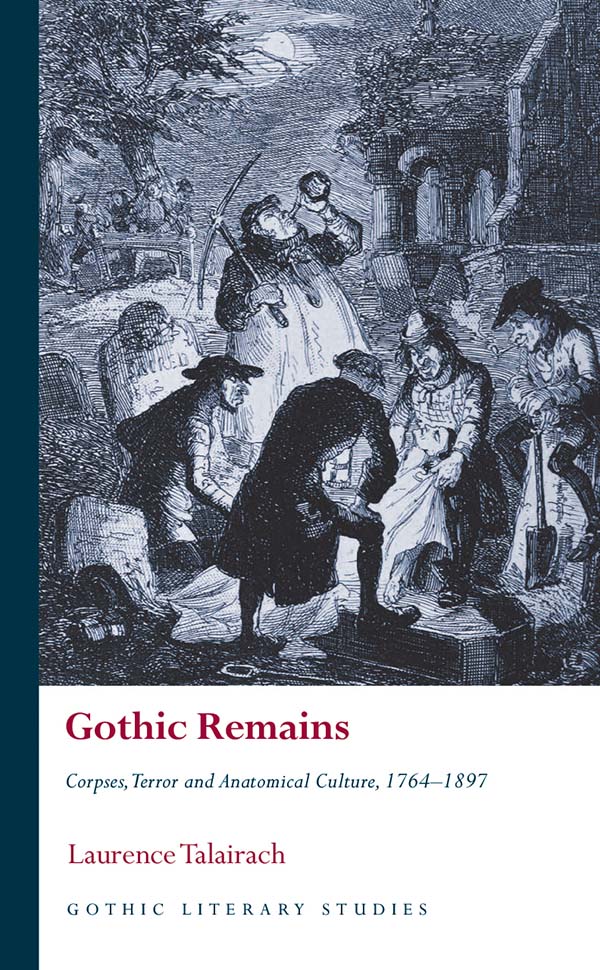Gothic Remains
Corpses, Terror and Anatomical Culture, 1764–1897
Author(s) Laurence Talairach
Language: English
Genre(s): Literary Criticism
Series: Gothic Literary Studies
- October 2019 · 320 pages ·216x138mm
- · Hardback - 9781786834607
- · eBook - pdf - 9781786834614
- · eBook - epub - 9781786834621
The Gothic has always been fascinated with objects carrying with them a sense of horror – the decomposing body, the rigid corpse, the bleeding statue, the spectral skeleton – capable of creating a sublime form of beauty. Gothic Remains: Corpses, Terror and Anatomical Culture, 1764–1897 offers an exploration of those Gothic tropes and conventions that were most thoroughly steeped in the anatomical culture of the period – from skeletons, used to understand human anatomy, to pathological human remains exhibited in medical museums; from bodysnatching aimed at providing dissection subjects, to live-burials resulting from medical misdiagnoses and pointing to contemporary research into the signs of death. The historicist reading of canonical and less-known Gothic texts proposed throughout Gothic Remains, explored through the prism of anatomy, seeks to offer new insights into the ways in which medical practice and the medical sciences informed the aesthetics of pain and death typically read therein, and the two-way traffic that emerged between medical literature and literary texts.
Acknowledgements
Introduction
Rattling Bones: The Skeleton in the Trunk
The Chamber of Horrors: Anatomical Models and the Gothic
Body-snatching
The Pandemonium of Chimeras: The Medical Museum
Death Misdiagnosed: Gothic Live Burials
Epilogue
Notes
Select Bibliography
Index


